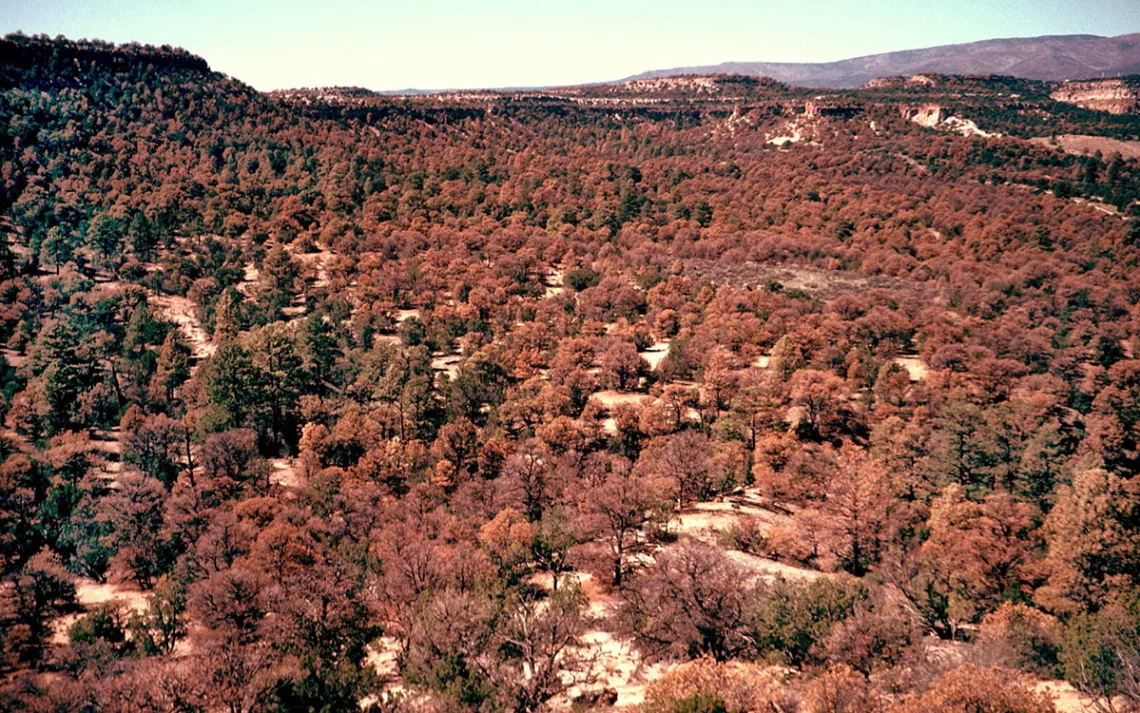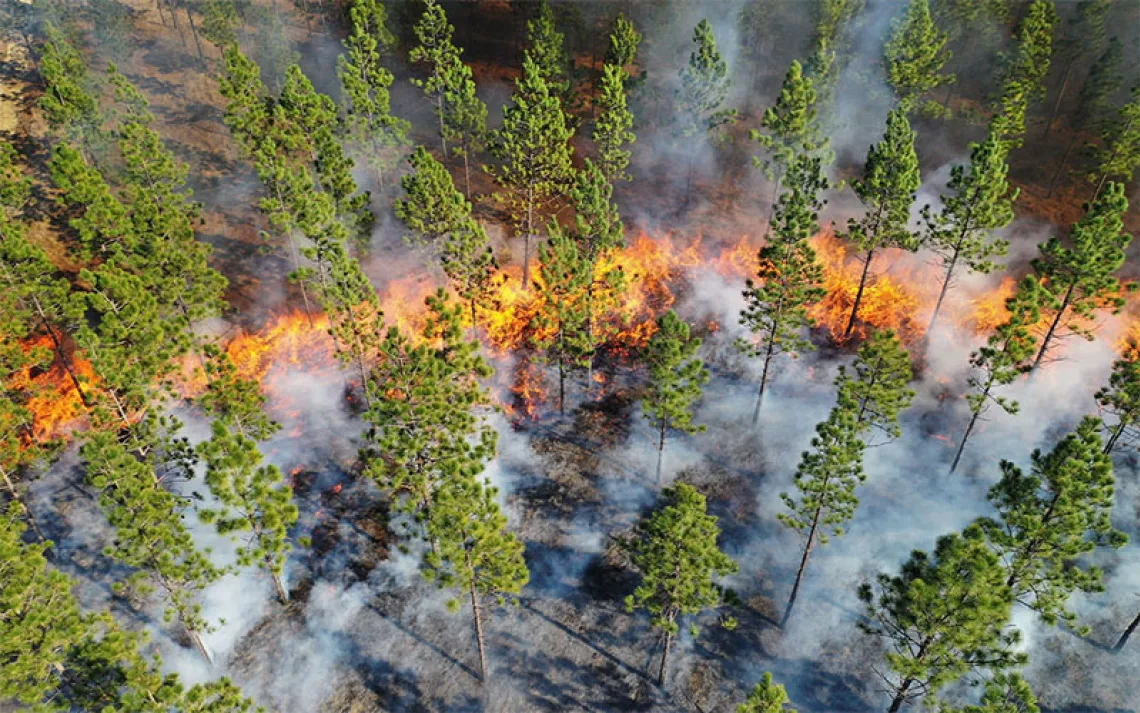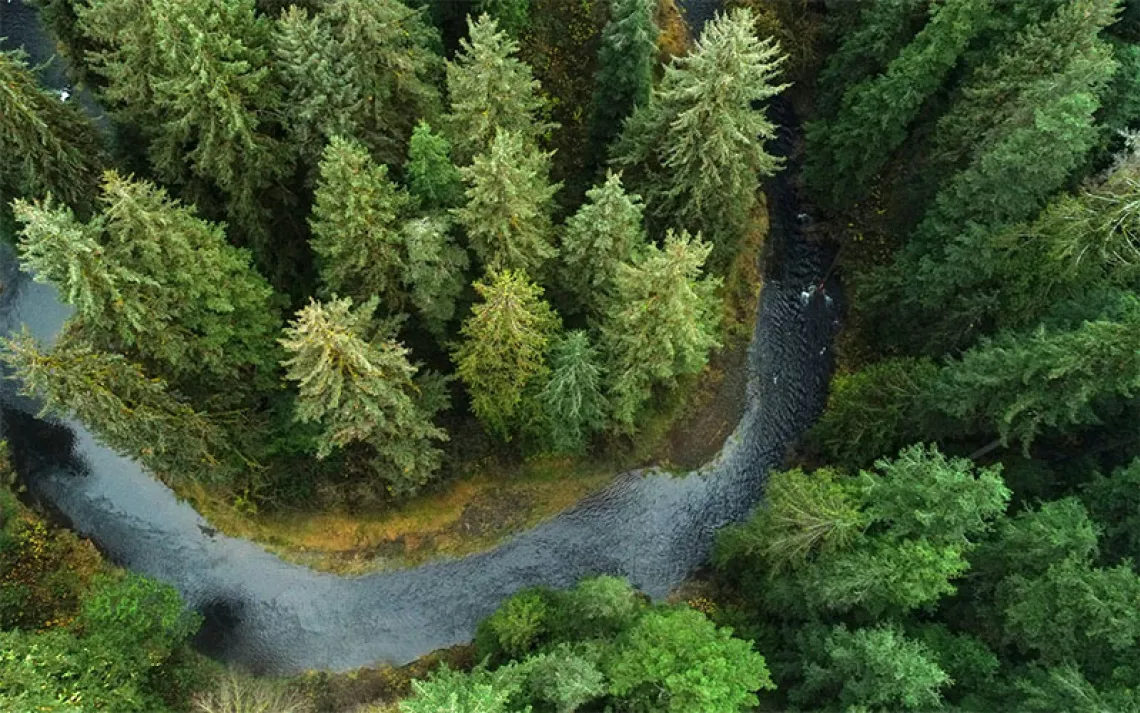Hotter Temperatures Are Causing Trees to Have Heat Strokes
How climate-change-driven drying of the air is leading to tree deaths the world over

Millions of acres of piñon, ponderosa pine, Douglas fir, and other conifer species were killed across the Southwest in the 2000–2004 onset of US megadrought. | Photo by Craig D. Allen
When scientist Craig Allen first arrived in the Jemez Mountains of northern New Mexico in the early 1980s, the American Southwest was in the early years of a decades-long wet period. It was, in Allen’s words, a “good time to be a tree.” Allen had gone to New Mexico to study the local forests for the US Geological Survey. Fast forward two decades and conditions have radically changed.
Starting in the late 1990s and early 2000s, the Southwest’s long-term climate pivoted sharply, transitioning to what scientists are now calling a “megadrought.” The drought was marked by a decline in precipitation. But it also included something new: abnormally warm temperatures. The combination would prove deadly. The early 2000s marked the start of a region-wide, massive die-off of trees that continues to this day.
“2002 was the real kick in the teeth in terms of forest dieback here,” says Allen, now an adjunct professor at the University of New Mexico in Albuquerque. “There were millions of acres of different species of trees dying across the whole region.”
What makes the Southwest’s current megadrought so exceptional and so very different from the region’s notorious megadroughts of the past, says Allen, isn’t so much a lack of precipitation as an excessive amount of heat. Scientists have determined that about a third of the strength of the current megadrought is due not to a lack of water but to warming tied to climate change. Heat, it is now known, is making the region’s drought worse. But elsewhere heat is also leading to a very new and worrying development: drought-induced tree die-offs in regions not typically known for droughts.
Allen, a self-described “documentarian” of his region’s ecological collapse, was one of the first scientists to put the pieces of this mystery together. For decades, he observed tree die-offs in New Mexico occurring both at lower, drier elevation sites as well as higher, wetter sites, and for the same reason: Heat was drying the air, and this was stressing and weakening trees, making them vulnerable to insect attacks that would deal the final death blow.
Scientists are now calling this phenomenon “hot drought.” (Or sometimes, “hotter drought,” because droughts generally tend to be hot.) According to a growing body of research, hot droughts have now been tied to tree die-offs the world over, regardless of how much precipitation a region typically gets.
A 2022 study published in Nature Communications combines nearly five decades of data on previously recorded tree die-offs from nearly 700 different locations around the world. From these data, the study concludes that the recent increase in global forest die-offs—recorded at 675 locations on nearly every continent—were due to a “hotter-drought fingerprint.” A fingerprint the researchers further linked to human-caused climate change.
“There is uniformity across this large global database,” says study lead author William Hammond, plant ecophysiologist at the University of Florida. “It shows temperature has played a really important part in tree mortality.”
The study also found that across ecosystems, the same hotter drought fingerprint could be found in previously recorded tree die-offs across nearly every biome examined, wet and dry. This supports conclusions from an earlier 2009 paper led by Allen and published in Forest Ecology and Management.
Hammond says the signal in the data set is clear: Abnormally warm temperatures tied to climate change are killing trees globally. He says he takes issue with scientists who don’t acknowledge this.
“To continue to call this phenomenon ‘drought-induced mortality’—which is by far the term that is pervasive in most of the 154 papers in the database—is pretty much irresponsible at this point, because we have the smoking gun [temperature],” says Hammond.
According to Hammond, Allen, and other scientists I interviewed for this story, hot droughts have been particularly damaging to Earth’s trees for several reasons. First, they exacerbate drought caused by a lack of precipitation, which scientists refer to as “meteorological drought.” This stresses and weakens trees. Hot droughts, however, can also stress and weaken trees in regions where precipitation levels have been at or near normal. This is because hot droughts not only dry out soil but also the air.
“When it’s hot, it’s dry and things get drier,” says John Abatzoglou, professor of climatology at University of California, Merced, who is a coauthor on the 2022 paper with Hammond and Allen. Abatzoglou is a leading researcher on climate change, hot drought, and a scientific metric that measures the dryness of the air called vapor pressure deficit, or VPD. “Vapor pressure deficit is really magnified when you get really warm conditions,” says Abatzoglou.
High VPD means the air is really dry. During these periods of high atmospheric aridity, the atmosphere can, in essence, suck water from trees and other plants like soda through a straw. While this process starts in a plant’s leaves, if the pull of the atmosphere is great enough, water can be drawn from the water-carrying tissues deep inside the plant as well. If this process occurs for long enough, or if the air is dry enough, these tissues can experience extreme tension. Air can sneak into the tissues, leading to embolisms and causing what scientists call hydraulic failure. The result is something close to the plant equivalent of heat stroke.
Heat also slows photosynthesis. As a result, trees can experience carbon starvation, a condition that can either kill a tree outright or make it more vulnerable to biotic attacks, especially from insects. Both have been observed in recent decades.
The 2022 paper essentially tracks this relationship. It found that high VPD levels were strongly associated with tree die-offs worldwide. This is the “hotter-drought fingerprint.” “That’s just the physics of the atmosphere,” says Allen. “That means warming in the atmosphere is going to be increasing the potential deficit, the VPD, of the atmosphere, all across the planet in all forest types. That’s why it’s a global phenomenon.”
But this isn’t wholly a new discovery. Allen was one of the first researchers to make this connection in a 2012 study in Nature Climate Change. The study built off Allen’s earlier research on tree die-offs in the American Southwest. Using a large dataset of tree-ring growth records that dated back to the year 1,000 AD, the study determined that the megadrought that began in the Southwest in the late 1990s to early 2000s had led to the lowest growth rate on record for trees in the last 1,000 years. Lower, Allen notes, than the 1,100 AD megadrought that is believed to have caused the region’s original inhabitants to abandon the once-thriving city that now lies in ruins in Chaco Canyon.
The 2012 study was also one of the first to tie tree mortality to VPD. According to the study’s analysis, high VPD levels were associated with tree death at both drier, low-elevation sites with piñon pine trees as well as at wetter, higher-elevation sites with Douglas fir trees.
The future fate of Earth’s trees, says Allen, is exacerbated by the fact that the deficit does not increase linearly with temperature. That means that for each degree increase in temperature, VPD will increase more. The result: Each degree increase in warming is likely to create disproportionately, ever-larger VPD levels and ever-larger tree die-offs.
Hammond and colleagues’ 2022 study clearly illustrates this. After first examining the role between temperature and tree mortality, the study goes on to make a series of predictions about how much worse a future with high warming due to more greenhouse gas emissions is likely to be versus a future with slightly less warming. The study concludes that limiting global warming to 2ºC above preindustrial levels will result in less than half the number of forest die-offs predicted under 4ºC of warming. This, says Hammond, is a significant finding, one in which he sees something of a silver lining.
“What this global data on trees is telling us is that every degree matters,” Hammond says. “I look at that and I don’t get depressed. This is why every action we can take to limit further warming of the earth has got to be our top priority."
 The Magazine of The Sierra Club
The Magazine of The Sierra Club



